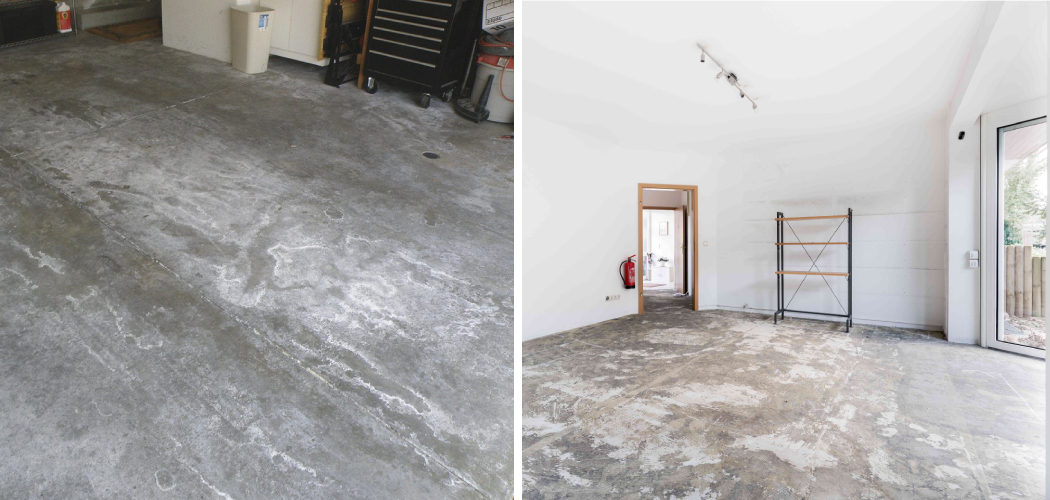Concrete floors are popular for durability and performance in many homes and commercial places. However, these floors are susceptible to moisture problems, which can cause deterioration, mold growth, and even health hazards.
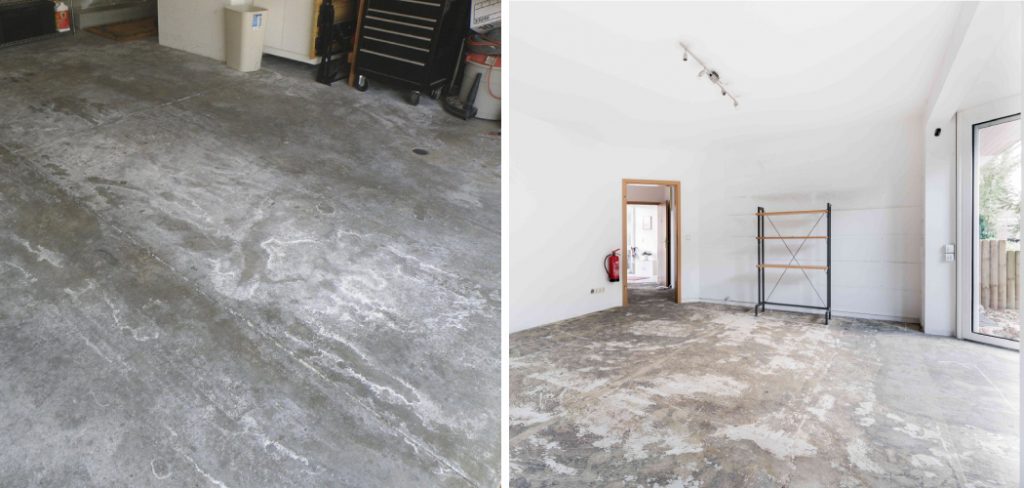
Whether you have a new or existing concrete floor, it’s crucial to take preventative measures to prevent moisture problems from happening. In this blog post, we’ll explore tips on how to prevent moisture problems on concrete floor.
Can You Prevent Moisture Problems on The Concrete Floor?
If you’ve ever dealt with a moisture problem on a concrete floor, you know it can be a headache to fix. Not only can it damage the floor itself, but it can also create an unhealthy environment for anyone spending time in the affected area. The good news is with the right precautions, you can prevent moisture problems from ever occurring in the first place.
From proper installation techniques to using sealants and vapor barriers, there are several ways to add an extra layer of protection to your concrete floor. By taking the necessary steps to prevent moisture problems, you can save time, money, and stress.
Why Should You Prevent Moisture Problems on The Concrete Floor?
Regarding flooring, everyone wants to ensure that their floors are not only aesthetically pleasing but also durable, long-lasting, and easy to maintain. Concrete floors are no exception. As a homeowner or business owner, you must take measures to avoid moisture issues on your concrete floors. Why?
Because moisture problems can lead to a range of issues, such as the growth of mold and mildew, discoloration, dampness, and foul odors. If left unchecked, these problems can cause major damage to your flooring, decrease property value, and potentially harm your health. By preventing moisture issues on your concrete floors, you’ll protect your investment and ensure that your floors remain safe, clean, and beautiful for years to come.
How to Prevent Moisture Problems on Concrete Floor – Tips and Tricks
1. Install a Vapor Barrier
Installing a vapor barrier is one of the most effective methods to prevent moisture from seeping through the concrete floor. A vapor barrier is a layer of material, typically plastic sheeting, that covers the entire concrete subgrade before the concrete is poured.
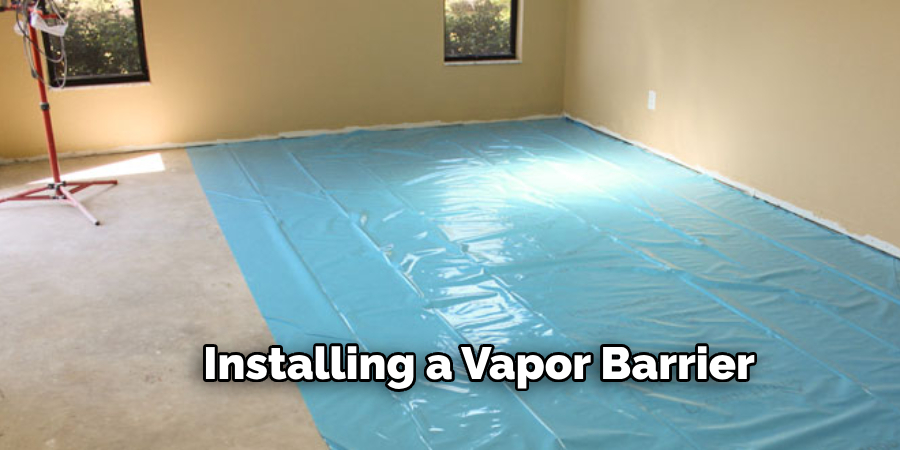
The vapor barrier prevents moisture from passing through the concrete and entering the room above. If you’re looking to install a new concrete floor, make sure to include a vapor barrier in your plans.
2. Use Sealants
If you have an existing concrete floor that doesn’t have a vapor barrier, you can still prevent moisture problems by using sealants. A sealant is a protective coating that seals off the concrete and prevents moisture from penetrating the surface.
Different types of sealants are available on the market, including epoxy coatings and penetrating sealers. Consider consulting with a professional to determine the best type of sealant for your concrete floor.
3. Provide Proper Ventilation
Good air circulation prevents moisture from building up on your concrete floor. If you have a concrete basement or crawlspace, make sure to install proper ventilation to reduce humidity levels. You can also use a dehumidifier to remove excess moisture from the air. Make sure to keep the dehumidifier clean to prevent mold growth.
4. Repair Cracks and Holes
Cracks and holes in your concrete floor can allow moisture to seep in and cause problems. Reproducing cracks or holes as soon as possible is important to prevent further damage. A concrete patching compound can fill in the cracks and holes. Make sure to follow the manufacturer’s instructions carefully and allow sufficient time for the patch to dry before using the floor.
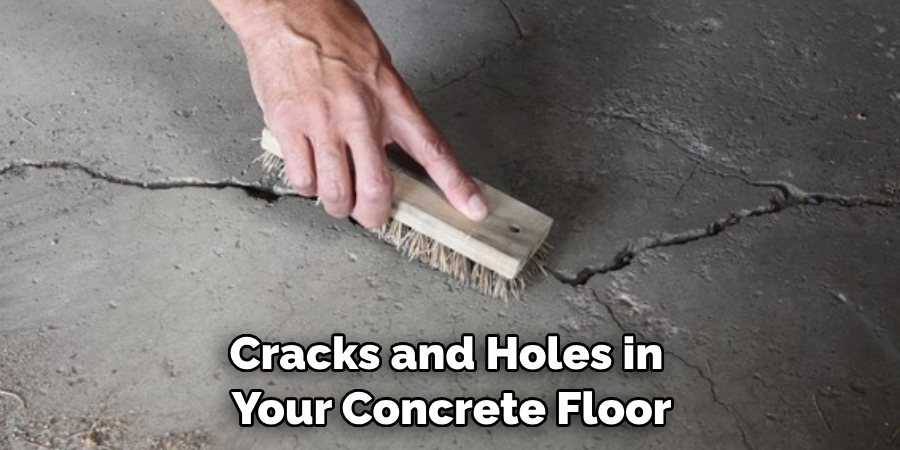
5. Keep the Floor Clean and Dry
Prevent moisture problems on your concrete floor by keeping it clean and dry. Sweep or vacuum regularly to remove dirt and debris. If you spill anything, clean it up immediately to prevent moisture from seeping into the concrete. Use a dry mop or towel to clean up spills, and avoid using excessive water when washing the floor.
6. Use Mats, Rugs, and Furniture
Protective mats, rugs, and furniture can also prevent moisture problems on your concrete floor. Mats and rugs provide a barrier between the floor and water or other liquids. Place furniture with legs on the concrete to help reduce direct contact with the floor. Make sure to clean any wet spills immediately to avoid moisture buildup under mats and rugs.
7. Monitor the Humidity Levels
It’s important to regularly monitor the humidity levels in your home or commercial space to ensure that moisture does not become an issue on your concrete floor. You can use a hygrometer or other monitoring devices to check the relative humidity in the air. Keep the relative humidity between 30-50% to prevent mold growth and other moisture-related problems.
By following these tips, you can effectively prevent moisture problems on your concrete floor and keep it looking great for years to come. If you have any questions or concerns about your concrete floor, don’t hesitate to contact a professional for advice. With the right precautions, your concrete floor can last many years while remaining safe and beautiful.
5 Things You Need to Know Before Prevent Moisture Problems on Concrete Floor
1. The Concrete Floor Must Be Clean and Dry
Before applying a sealer or other type of moisture barrier, you need to ensure the concrete floor is clean and dry. Any dirt, dust, or other contaminants on the surface of the concrete will prevent the sealer from adhering properly. Additionally, if any moisture is present on the surface of the concrete, it will need to be completely dried before proceeding.
2. Choose the Right Sealer for Your Needs
There are a variety of different sealers that can be used to protect concrete floors from moisture. Some sealers are designed for indoor use, while others are better suited for outdoor applications. You’ll also need to choose a sealer that is compatible with the type of concrete you’re working with. For example, some sealers are not recommended for stamped or decorative concrete use.
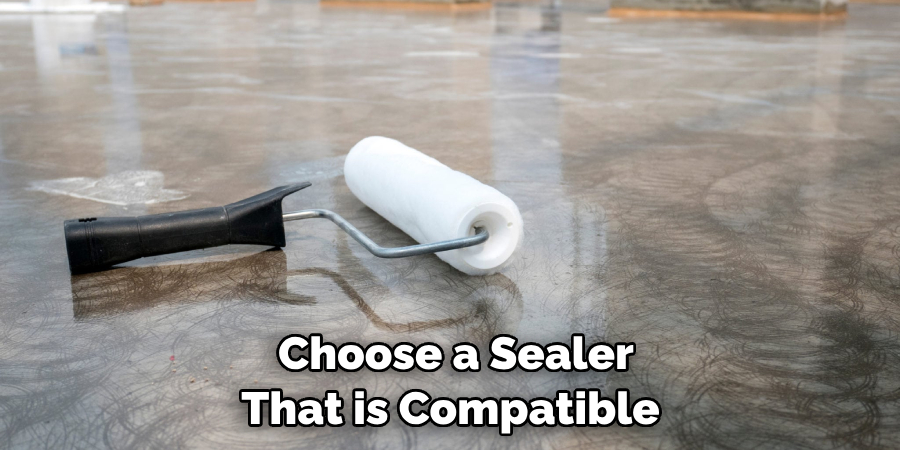
3. Apply the Sealer in the Proper Conditions
It’s important to apply the sealer in conditions that are conducive to proper drying and curing. Ideally, you should apply the sealer when temperatures are between 50 and 90 degrees Fahrenheit and low humidity levels. If possible, apply the sealer in an area that is protected from direct sunlight and wind.
4. Follow the Manufacturer’s Instructions
Once you’ve selected a sealer and ensured the conditions are right for an application, following the manufacturer’s instructions carefully is important. Ensure you understand how much sealer to apply and how long it will take to dry and cure before proceeding. Failure to follow the manufacturer’s instructions could result in a poor bond between the sealer and the concrete, leading to moisture problems down the road.
5. Inspect the Floor Regularly
Even if you’ve taken all the necessary steps to protect your concrete floor from moisture, inspecting it regularly for any signs of problems is still important. If you notice any cracks or other damage to the surface of the concrete, make sure to repair them as soon as possible to prevent moisture from seeping in.
Benefits of Prevent Moisture Problems on Concrete Floors
Concrete flooring is an excellent option in any building, but keeping it protected from moisture is important. The truth is moisture can cause significant damage to a concrete floor, from unsightly stains to dangerous slips and falls. By preventing moisture problems, you ensure the floor’s longevity and create a safer environment for everyone who uses the space.
Regular maintenance, sealing, and adequate ventilation are just some of the ways to prevent moisture from creeping up through concrete flooring. Maintaining a dry and healthy environment is a smart investment for any business or homeowner who wants to keep their concrete floors looking great for years to come.
Some Common Mistakes People Make When Trying to Prevent Moisture Problems on Concrete Floor
Keeping your concrete floors dry and free from moisture is crucial to maintaining their structural integrity and enhancing their longevity. But this is often easier said than done, as people make several common mistakes when trying to prevent moisture problems on concrete floors.
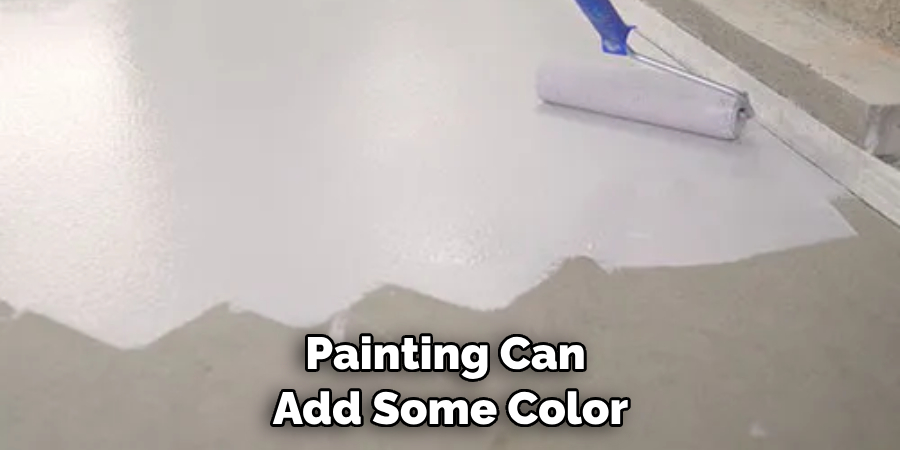
One of the most prevalent of these mistakes is failing to seal or seal improperly, leaving the concrete floors vulnerable to water damage and compromising their durability. Another mistake is installing flooring materials without considering their moisture resistance, leading to early deterioration and expensive repairs.
It’s also important to avoid over-watering surrounding landscape areas or failing to provide adequate drainage, both of which can contribute to moisture problems on concrete floors. To prevent moisture problems, take a proactive stance and address these common mistakes to ensure your concrete floors remain strong and functional for years to come.
Is It Better to Paint or Seal a Concrete Floor Against Moisture Damage?
Moisture can cause serious damage to your concrete floor, which means you need proper protection against it. The question is, should you paint or seal your concrete floor? Painting can add some color and design to your floor, but it doesn’t provide enough protection from moisture.
Sealing, however, can offer great moisture protection that improves your floor’s durability. Your concrete floor can withstand water damage, mold growth, and even chemical exposure with sealants. Depending on your preference, you can choose a clear or colored sealant. So, while painting may be suitable for adding aesthetic beauty to your floor, sealing is undoubtedly a better option for keeping it safe from moisture damage.
Conclusion
Moisture problems can lead to serious issues for your concrete floor, including deterioration, mold growth, and even health hazards. Prevent such problems by installing a vapor barrier, using sealants, providing proper ventilation, repairing cracks and holes, and keeping the floor clean and dry.
By following these tips, you can keep your concrete floor in good condition and enjoy its many benefits for years to come. Thanks for reading our post about how to prevent moisture problems on concrete floor.
